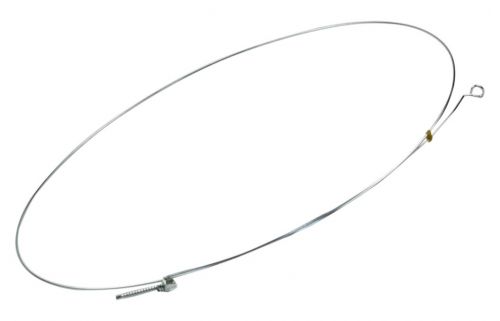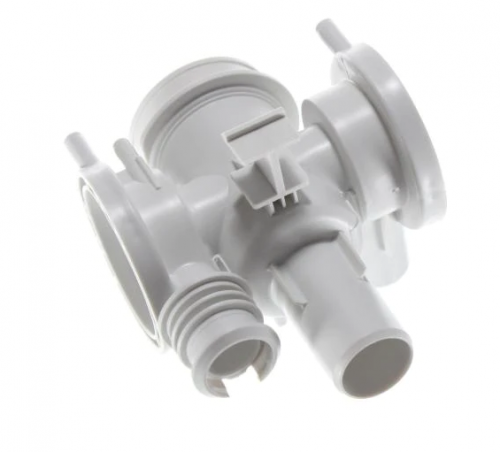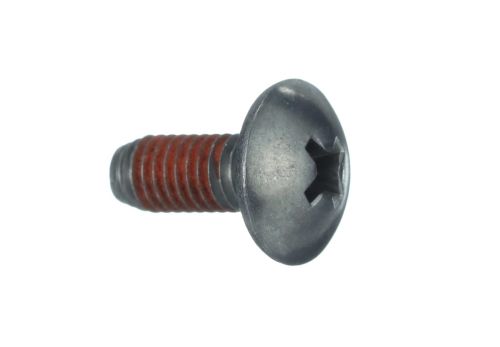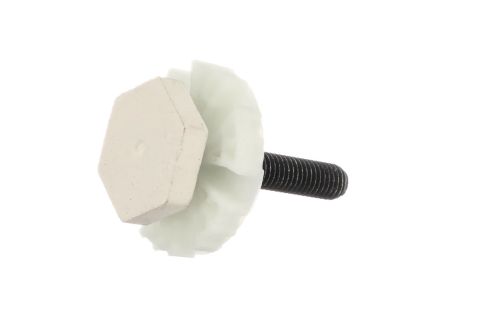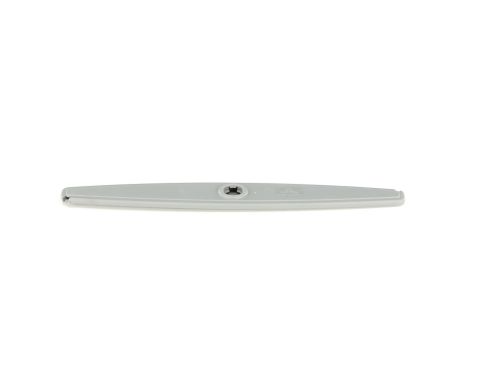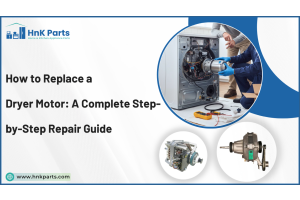
Samsung Washing Machine Parts Troubleshooting: Here's How to Fix
Having the ability to troubleshoot and easily fix possible problems related to your Samsung washing machine can help you save time and money. It is important to know the role of Samsung washing machine parts and the symptoms of a malfunction to effectively solve the problems. Here in this article, we will discuss troubleshooting the common Samsung washer problems, using original Samsung washer parts, and Samsung washer maintenance tips to prevent further Samsung washer breakdowns.
Importance of Genuine Samsung washing machine parts
It is important to use genuine Samsung washer replacement parts to keep your washing machine in top performance. Important reasons, however, why genuine washer parts are required are as follows:
-
Quality assurance: Samsung genuine parts are made to meet certain safety and quality standards set by Samsung. These parts will ensure that your washer is operating at its best.
-
Compatibility: The authentic parts are designed to fit perfectly with your particular Samsung model, thus minimizing the chances of installation mistakes and further damage.
-
Warranty protection: For example, using non-genuine or third-party parts, such as a washing machine door seal for AEG, can leave you without warranty, and it will cost you heavily in further repairs.
-
Longevity: Genuine Parts hold longer and perform better, expanding the life expectancy of your washing machine.
Investing in authentic Samsung washer repair parts is the absolute best guarantee of the reliability and longevity of your appliance.
Common Signs of Faulty Samsung Washing Machine Parts
It is important to identify the symptoms of faulty Samsung washing machine parts so that you can identify the problem and solve it effectively. Some signs that indicate problems are as follows:
-
Washer not starting: It may be related to a broken door latch, a faulty printed circuit board (PCB), or power supply issues.
-
Water not filling: A common issue at the start of a wash cycle, often due to a faulty water inlet valve or low water pressure.
-
Not draining properly: If your washer will not drain, first look for clogs in the drain pump filter, any pump motor issues, etc.
-
Excessive vibration or noise: This can happen when the shock absorbers are worn or when the suspension rods have been installed incorrectly.
-
Spin issues: For example, failure to spin can be caused by a bad motor coupling, clutch, or balance sensors.
-
Leaking water: A worn Samsung washer door seal or damaged hoses are often indicated by signs of leakage.
-
Error codes: In most cases, your user manual will detail the exact part codes, such as UE, 4C, or 5E, that need attention.

Troubleshooting Guide: Fixing Common Issues with Samsung Washing Machine Parts
While Samsung washing machines are dependable, over time, problems can occur. Below are the common problems and the way to debug and resolve these issues in the most effective troubleshooting approach and also include part replacements.
1. Washer not starting
If your Samsung washer won’t power on or start a cycle, the problem is usually the door latch, PCB, or power connection.
Troubleshooting steps:
-
Check the door latch: The Samsung washer door latch has to be engaged properly. The machine won’t start if it’s faulty.
-
Inspect the PCB: If the PCB is damaged, it may not send the start signals to the machine.
-
Examine power supply: Make sure the washer is plugged in tightly. Verify voltage from the outlet using a multimeter.
2. Water is not filling
Usually, a lack of water intake is related to valve malfunction or low water pressure levels.
Troubleshooting steps:
-
Inspect the water inlet valve: The water entry can be restricted by a faulty valve. Clean it or replace the Samsung water inlet valve.
-
Check the water pressure sensor: If this sensor is not measuring pressure correctly, filling will be inconsistent.
If there is good pressure but no water enters, perform a Samsung water inlet valve replacement.
3. Not draining properly
If there is water in the drum, the drain system may be blocked or the pump is failing.
Troubleshooting steps:
-
Clean the drain pump filter: If the Samsung drain pump filter is clogged, it can restrict water flow. Rinse it clean and remove debris.
-
Inspect the pump motor: If the Samsung drain pump filter is clear but the draining issues persist, test the pump motor.
The Samsung drain pump filter is often replaced or cleaned to resolve draining problems.
4. Excessive vibration or noise
Typically, unusual vibrations or loud sounds are caused by an imbalance or worn stabilizing components.
Troubleshooting steps:
-
Check shock absorbers: Shaking occurs when the damaged shock absorber can’t stabilize the drum.
-
Inspect suspension rods: These are helpful against vibration; replace if bent or broken.
If the door is not secured during cycles, a malfunctioning Samsung washer door latch may also contribute.
5. Spin issues
Motor or balance-related parts may be the cause if your washer won’t spin or spins weakly.
Troubleshooting steps:
Examine motor coupling: This connects the motor to the transmission. Replace if worn.
-
Inspect clutch assembly: A damaged Samsung washer clutch assembly may not engage the spin cycle correctly.
-
Check balance sensors: Make certain the sensors are working and the washer has been leveled.
Poor spinning performance can be prevented by regular checks on the Samsung washer clutch assembly.
6. Leaking water
Leaks can occur around the door or under the washer due to seal or hose problems.
Troubleshooting steps:
-
Replace door seal: If your Samsung washer door seal is leaking, you may find puddles around the machine. Replace if torn or moldy.
-
Check hoses: Cracked or loose water hoses should be tightened or replaced.
-
Inspect the detergent drawer: Buildup can cause detergent overflow.
A Samsung washer door seal leak can cause further damage to the internal parts of the washer if not addressed.
7. Error codes
Samsung washers show codes that help you diagnose the problem quickly.
Troubleshooting steps:
-
Decode error codes: Each code should be referred to in your model’s manual.
-
Part-specific resolutions: For example, a code can indicate that the Samsung drain pump filter is blocked, the Samsung washer clutch assembly is damaged, or the Samsung water inlet valve needs to be replaced.
8. Display not working
The issue usually has to do with the PCB or power board when the digital display goes dark.
Troubleshooting steps:
-
Test PCB and wiring harness: Make sure the wires are connected properly and there is no burn or damage on the board.
-
Inspect the power board: If it is faulty and not responding, then replace it.
It may also be caused by a faulty Samsung washer door latch or a worn Samsung washing machine belt.
9. Unusual belt noises
A worn drive belt is usually indicated by strange thumping or squealing noises.
Troubleshooting steps:
-
Inspect the drive belt: Erratic drum movement can be caused by a frayed, loose, or cracked belt.
-
Samsung washing machine belt replacement: Perform this to ensure smooth motor-to-drum transmission.
Replacing the regular Samsung washing machine belt prevents the motor from wearing excessively and from smooth cycles.
10 Most Common Washing Machine Problems And Solutions
Samsung Washing Machine Parts Repair: DIY Solutions vs. Professional Help
Diagnosing washing machine problems isn’t difficult, and you won’t need to call in the technician unless it’s time for the annual maintenance checkup. But stakes feel especially high if you own a Samsung unit. Therefore, which one should you choose—to DIY or seek help from a professional? Let’s break it down.
|
Category |
DIY Repair |
Professional Repair |
|
Cost |
|
|
|
Learning |
|
|
|
Response time |
|
|
|
Skills required |
|
|
|
Risk |
|
|
|
Parts & tools |
|
|
|
Best for |
|
|
|
Warranty impact |
|
|
Preventive Maintenance Tips for Samsung Washing Machine Parts
Samsung washer maintenance can extend the life of the Samsung washer and save you from having to shell out money for repairs. The following are some tips for Samsung washer maintenance:
-
Regularly clean the drain pump filter: To prevent clogs, inspect and clean the drain pump filter at least once a month.
-
Check hoses and connections: As needed, check for kinks, cracks, or loose fittings in hoses and replace as required.
-
Check and clean the detergent drawer: Make sure there is no buildup of material that could cause overflow problems.
-
Balance the load: Load your washer correctly, always, to avoid strain on the components during the spin cycles.
-
Use quality detergents: Do not use too much detergent, which can lead to buildup and premature part failure.
-
Regular check-ups: To be on the safe side, it would be wise to schedule an annual maintenance check with a pro to ensure that everything is working on a good basis.
Following these maintenance tips and using them to pinpoint the symptoms of problematic situations with the washer will allow the washer to work much longer to its greatest extent.
Washing Machine Parts and Their Functions: An Ultimate Guide
Effective troubleshooting of Samsung washing machine parts involves recognizing common symptoms, fixing them with specific solutions, and knowing when to call in the professionals. It is important to use genuine Samsung washer replacement parts for performance and compatibility. It will also prevent issues and lead to a reliable and efficient washing machine experience if you maintain it regularly. HnKParts is your ultimate destination for home appliance solutions, offering a wide range of Samsung washer parts online. Explore top-quality components such as motors, hoses, agitators, timers, and more
FAQs
What should I do if my Samsung washer won't drain?
First, check for clogs in the Samsung drain pump filter. If it’s clean, inspect the pump motor for functionality.
How do I know if my Samsung washer door latch is faulty?
If your washer won't start or if the door won’t close properly, the Samsung washer door latch may be damaged and require replacement. Check for visible wear or test the latch's engagement manually.
How do I stop my Samsung washing machine from leaking?
To stop a Samsung washing machine from leaking, check the hoses, door seal, and detergent drawer for damage or blockages


